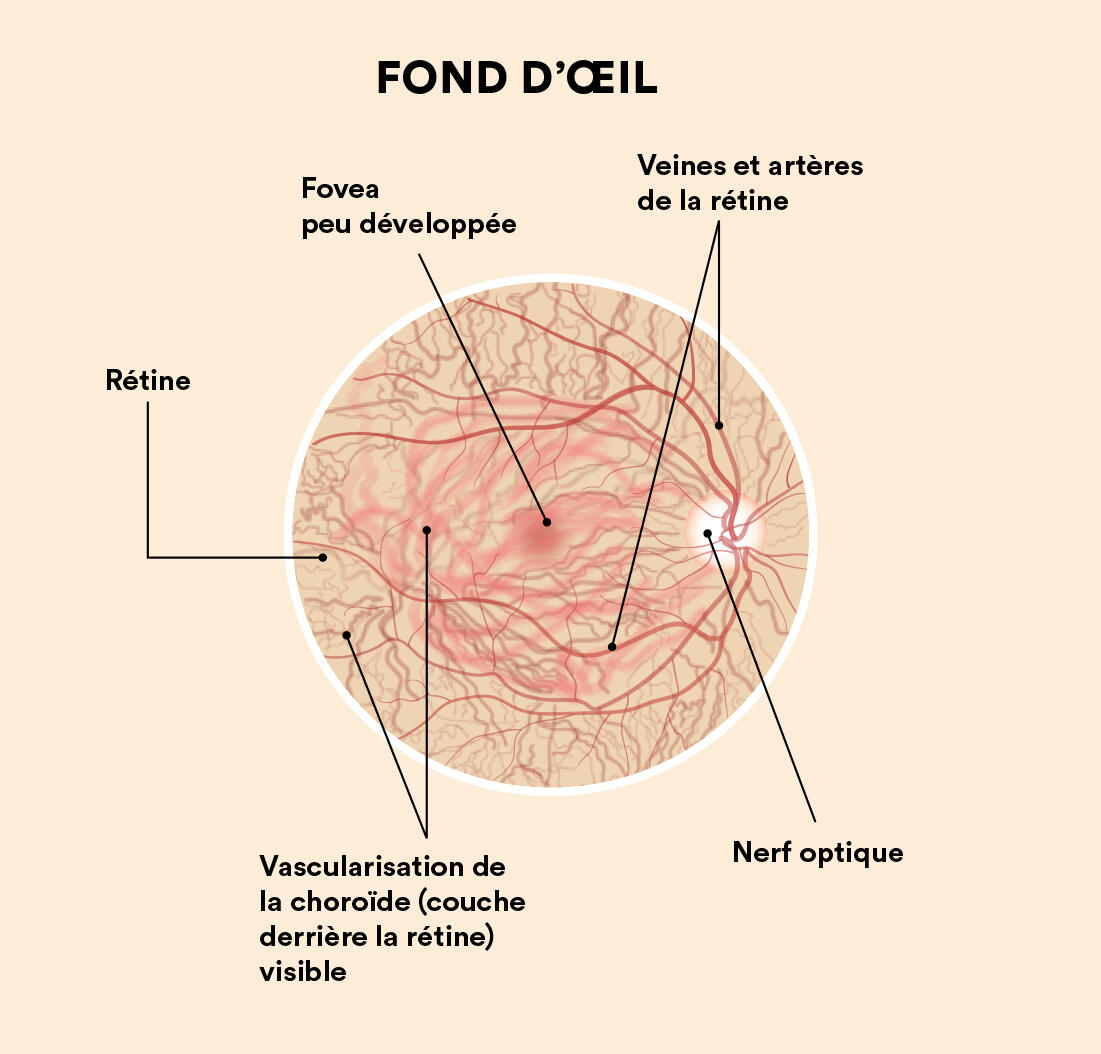Diseases
Albinism, Ocular

Definition
The name comes from the Latin ‘albus’, meaning ‘white’. Albinism is a hereditary abnormality of the pigmentation of the eyes, hair and skin. It affects around 1 in 40,000 people worldwide, but more in Africa. There are two forms. The first - called oculocutaneous albinism - affects the eyes, hair and skin, while the second - ocular albinism - is rarer and only affects the eyes. Transmitted genetically, the latter form is caused by a lack of the eye pigment, melanin, which makes the iris of the eye translucent or light blue.
Symptoms
The first sign of this condition is a drop in visual acuity. This is due to a defect in the development of the fovea, the part of the retina responsible for central vision. This disorder can range from a slight impairment to a sharp drop. The lack or absence of eye pigment also leads to hypersensitivity to light, known as photophobia. Nystagmus - uncontrollable eye movements - is also a feature of the condition in many people with ocular albinism. Finally, strabismus and optical defects such as myopia, astigmatism or hypermetropia may be associated with the disease.
Treatments
There is no cure for ocular albinism. Only specific visual aids can alleviate the symptoms. These include tinted glasses, which are extremely useful for reducing hypersensitivity to light, and corrective lenses, which are frequently prescribed to correct optical defects. Sun protection and dermatological monitoring are also necessary, as the risk of developing skin tumours is increased in those affected. Finally, depending on the case, surgery may be proposed to treat nystagmus or strabismus.
Source : Bien vu!
Content revised and checked on 19.12.2024

